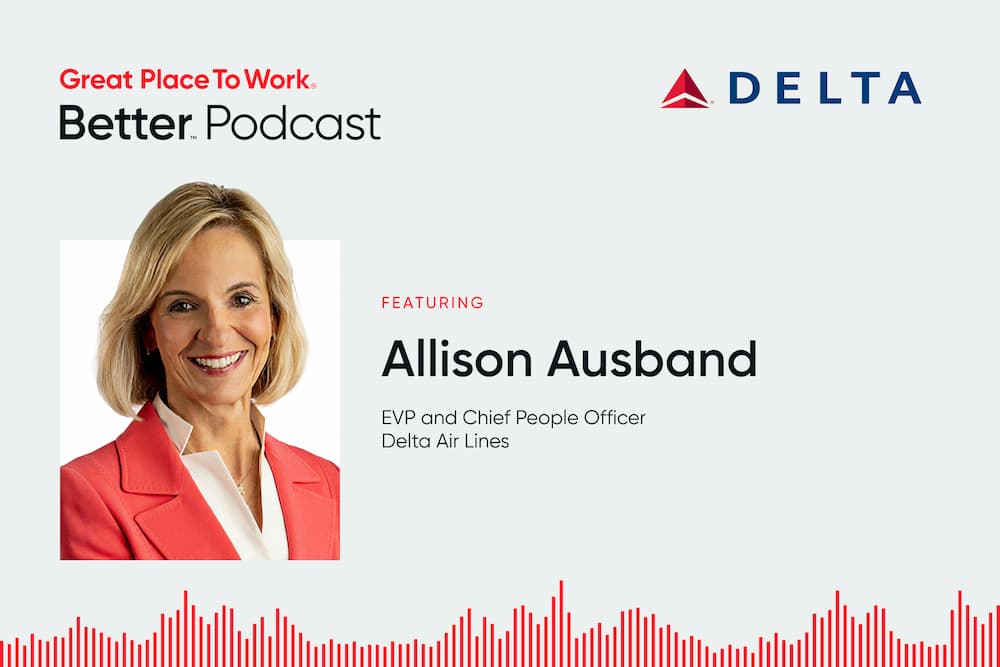Great Place To Work research found that the overwhelming majority of employees in organizations are advocating for inclusion and belonging.
There have been plenty of prominent voices pushing back on diversity, equity, inclusion & belonging (DEIB) in the last year.
Given all the objections, company leaders might ask the question: How many employees at my organization are opposed to our DEIB initiatives? The short answer: fewer than you think.
Great Place To Work® analyzed more than 521,000 employee surveys collected via its proprietary analytics platform. Using natural language processing tools, researchers combed employee comments to understand how they talked about DEIB.
Of the 24,000 employee comments about DEIB, 83% of those comments voiced support for DEIB activity in the company. That means that for every comment that opposed or complained about DEIB programs in a company, there were five voices arguing that DEIB efforts in the company were worthwhile and should continue — or even increase.
Creating DEIB momentum
The basic concepts of diversity, equity, and inclusion work have existed in corporate America for decades, even if the words have changed a bit over the years.
However, 2020 and the murder of George Floyd sparked heightened levels of investment and commitments to scaling DEIB practices. Juneteenth became a national holiday for the first time, honoring the history of Black Americans’ freedom. Companies made lots of commitments to invest in marginalized communities, hire from underrepresented groups, and purchase goods from minority-owned suppliers.
In companies, we saw a renewed interest and investment in employee resource groups — sometimes starting an ERG for the very first time. This was a moment of DEIB momentum, where everyone was bought in and making big changes to organizations.
Now four years removed from the protests, the attention being paid to DEIB is waning. For leaders with DEIB responsibilities, it begs the question: How can DEIB progress be kickstarted again, and in a sustainable way?
ERGs as agents of change
Great Place To Work research found that the entities most likely to build DEIB momentum in a company are employee resource groups (ERGs).
In a report titled “Untapped Energy: The Potential of ERGs,” we looked at the work of Damon Centola, Elihu Katz Professor of Communication, Sociology, and Engineering at the University of Pennsylvania. His work on how social networks influence behavior change shows that a large group rarely changes because of one influential leader. Instead, change often starts on the periphery of a group with several ambassadors or advocates building acceptance that eventually leads to change for the whole group.
A tangible example of this in practice was how individuals chose to wear masks or not wear masks during the COVID pandemic. One influential expert, such as Dr. Anthony Fauci, has limited influence to change an individual’s choice to wear a mask or not. However, when a person walks into a room where everyone else is wearing a mask, the social pressure to conform is more likely to convert them.
ERGs in organizations can play the role of internal advocate, helping to normalize behavior change that then drives wider adoption across the whole company.
What predicts DEIB advocacy?
How do you know if employees are going to be advocates for DEIB within the organization?
Great Place To Work research shows that employees who said they had a “great deal” of confidence in their executive team were two to five times more likely to be an advocate for DEIB than those who had less confidence in their executive team.
That’s a strong argument to look at ERG members. In a survey of more than 11,000 employee resource group members — part of The Great Transformation project — Great Place To Work found that ERG members were 30% more likely to have confidence in executive teams compared to nonmembers.
Overcoming resistance
While the resistance to DEIB in companies across the country is real, it’s important to remember that change has never been easy.
There were many in the 1980s who opposed making Martin Luther King Day a holiday. The Civil Rights movement of the 1960s was deeply unpopular in its time. But decades later, it is remembered differently.
For business leaders and DEIB professionals, the key is to cut through the noise and focus on results. DEIB is good for business — findings that have been reinforced again and again in our data.
Rather than trying to convince the 17% of employees who, on average, oppose DEIB, leaders should find ways to reengage the 83% who are open to DEIB initiatives, but might have seen their commitment drift amid concerns over AI, volatile market forces, and other concerns.
Even better, DEIB leaders must show how efforts to build belonging for all employees lead to business results. When recession fears or a poor quarter force leaders to tighten belts, DEIB programs that don’t have an unimpeachable business case are often the first to be cut.
Tips for building momentum
Here’s how you can build DEIB momentum in your organization:
1. Take time to reflect on your history and progress
Take time to reflect and reconnect to your “why” — what is the purpose and overall objective of your efforts to create a more inclusive and diverse workplace? What experiences from the last few years have shaped those goals and driven your decision? What has or hasn’t changed for your organization?
2. Make your DEIB infrastructure more robust
When DEIB work sits with only two or three people in a company of over 100,000 employees, the entire effort is vulnerable. What happens when a chief diversity officer leaves? It’s easy to lose your entire DEIB staff in a round of layoffs if the team is small.
Instead, think about how you can create wide bridges with many people in many different areas of the company owning a piece of the DEIB puzzle.
3. Empower ERGs to contribute to business goals
Employee resource groups are uniquely situated to transform organizations. They can build resilience and contribute directly to business outcomes from innovation to talent development and training.
In most companies, these groups lack resources and influence that will make the difference for business in the decades ahead.
4. Celebrate your wins and double down on what is working
As you take stock of your progress towards DEIB goals, take a close look at where things have improved and consider allocating more resources to programs that you can see are having an impact.
Get more insights
Learn how great workplaces are building trust with employees and driving business success. Sign up for our workplace culture newsletter.












